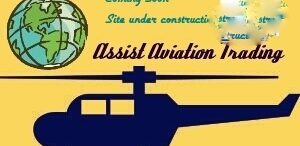Title: Evolving Horizons: Air Travel in 2030
As we peer into the future of air travel, the year 2030 beckons with a landscape of innovation and transformation. By then, the concept of air travel will have evolved significantly, driven by advancements in technology, changing consumer demands, and a growing emphasis on sustainability.
- Electrification Takes Flight: By 2030, electric aircraft will have firmly established their presence in the skies. These eco-friendly alternatives to traditional jet engines will offer reduced emissions and quieter operation, paving the way for greener air travel. Short-haul flights, in particular, will see widespread adoption of electric propulsion systems, leading to cleaner and more sustainable journeys.
- Supersonic and Hypersonic Travel: The dream of faster-than-sound travel will become a reality with the introduction of commercially viable supersonic and hypersonic aircraft. Passengers will traverse continents in a fraction of the time it takes today, opening up new possibilities for business and leisure travel. These next-generation aircraft will redefine the concept of long-haul flights, offering unprecedented speed and efficiency.
- Hyperconnected Travel Experience: In 2030, air travel will be seamlessly integrated into the broader ecosystem of smart cities and interconnected technologies. Passengers will enjoy a hyperconnected travel experience, from booking tickets and navigating airports to in-flight entertainment and post-arrival services. Artificial intelligence and machine learning algorithms will personalize every aspect of the journey, anticipating passenger needs and preferences.
- Sustainable Aviation Initiatives: The aviation industry will continue its commitment to sustainability, embracing innovative technologies and practices to reduce its environmental footprint. From biofuels and hydrogen-powered aircraft to carbon offset programs and sustainable airport infrastructure, airlines will prioritize eco-friendly initiatives to mitigate their impact on the planet.
- Space Tourism Takes Off: Beyond conventional air travel, space tourism will emerge as a niche but growing segment of the industry. Commercial space flights will offer adventurous travelers the opportunity to experience zero-gravity and witness breathtaking views of Earth from space. While still in its infancy, space tourism will capture the imagination of the public and pave the way for a new era of exploration beyond our planet.
In conclusion, the future of air travel in 2030 promises to be a blend of sustainability, speed, and connectivity. As technological innovations continue to reshape the aviation landscape, passengers can look forward to a more efficient, comfortable, and exhilarating travel experience unlike anything seen before.
